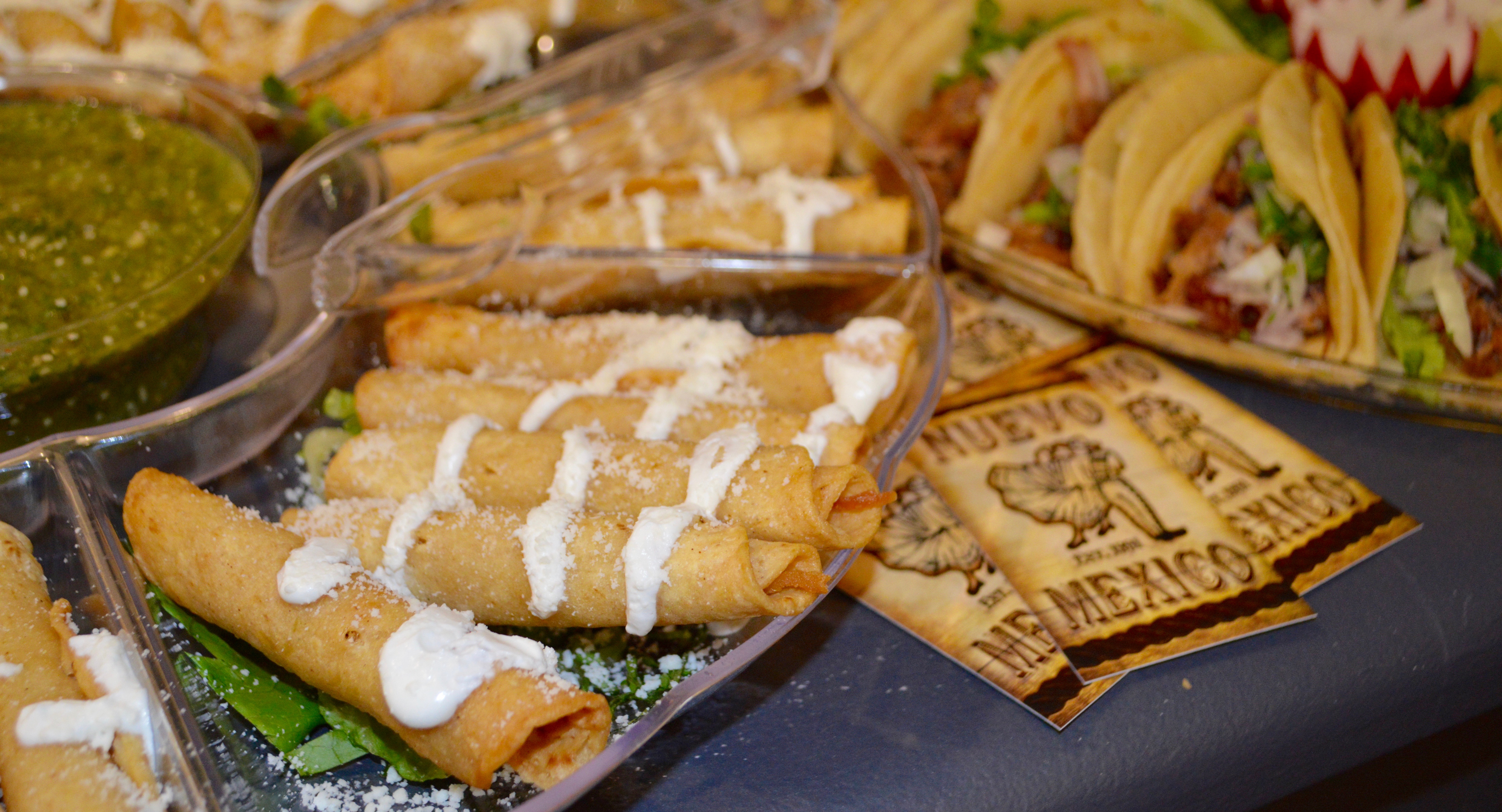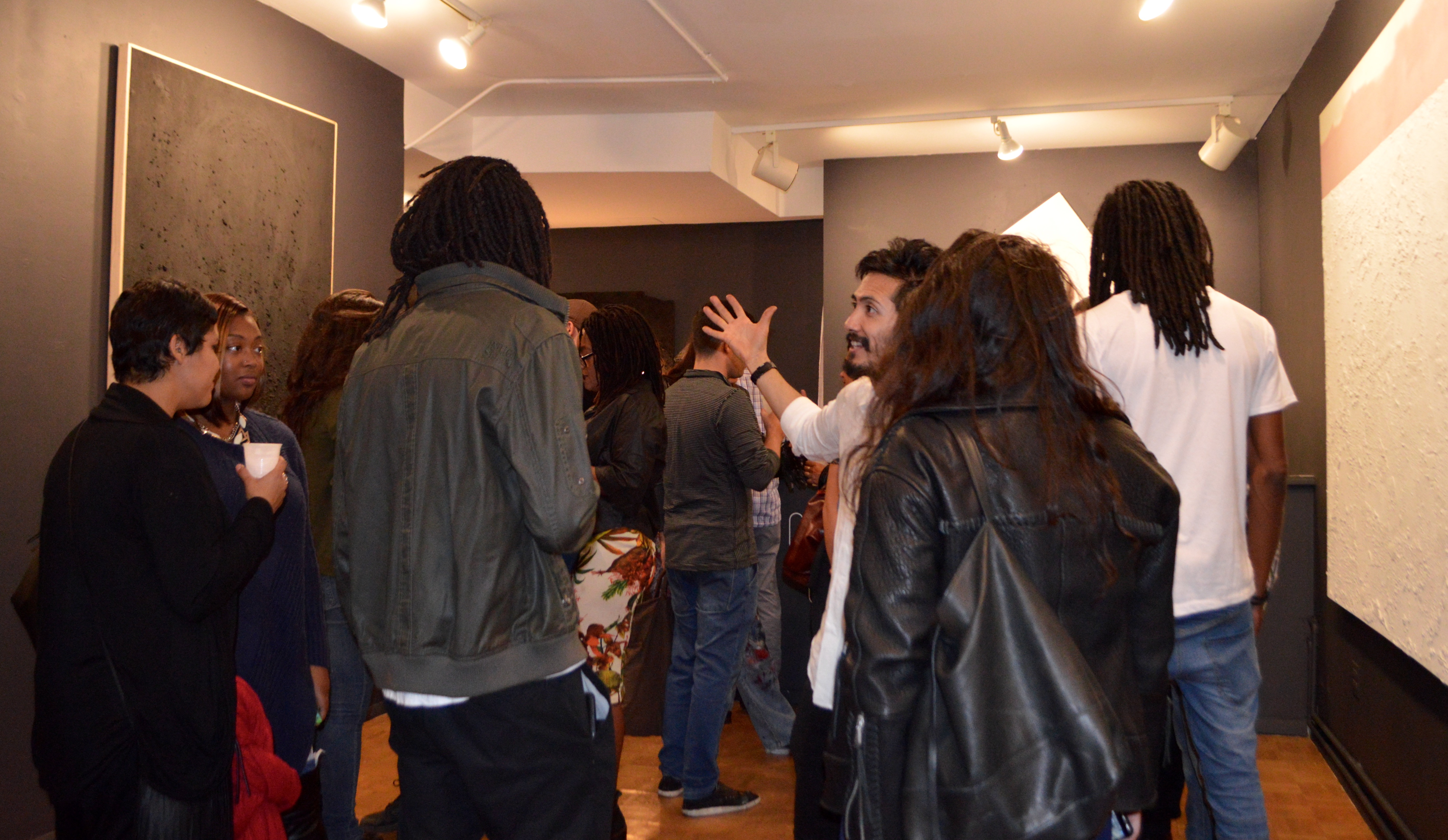It’s a still, peaceful fall evening and the air is warm and humid – a slight breeze brushes a colorful leave pass me, reminding me of the beauty in nature. Slowly it disappears, ascending into the sky like a small fleeting jewel.
As I walk into the Brooklyn Arts Fellowship, I am transfixed once again. I entered into the illuminated gallery and I am enveloped by a similar world, one filled with beautiful paintings hanging from black-painted walls.
The paintings are part of a debut series, “Cenizas y Origen,” a compelling exhibit by Mexican-born artist Diego Anaya, which explores the cycle of identity, migration, life and death.
Anaya’s artwork is nothing short of captivating. His work of art is everything you would want in a painting, large in scale, minimalistic, but rich in color, pattern, and texture ― it even exudes a certain pizazz that will keep drawing you back in.
As I let go of my surroundings and begin to solely focus on each of the paintings, a question arises: "Who am I?"
Staring into one of Anaya’s pieces will do that to you.
[anad]
You begin to examine each body of work like a puzzle, and you start to wonder: what you see, where you are, and where you’re going.
Two particular pieces that I was drawn to was an illuminated neon-installation with the word “Maiz” which translates to corn in English. Another intriguing piece was “La Raza de Sol” which translates to “Race of the Sun.”
Many of Anaya’s pieces had hidden words in Spanish. “La Raza de Sol” in particular, had the word “Sur” meaning “South” in English and next to the word, an arrow pointing upwards. To the bottom right of the painting, I was also able to perceived a house.
Understanding our roots is an important element in Anaya’s vision, the back and forth between the past and the present offers a sense of history and tradition.
This is why in order to properly celebrate the heritage of Anaya’s work, the Nuevo Mexico Restaurant took part in helping to bring a taste of his native homeland.
Corn tortilla chips, carnitas tacos, flautos, or tacitos were among some of the delicious complimentary bites that were served along with any choice of sauce to our liking.
Anaya's show, whose title translates to “Ashes and Origin” in English, is dedicated to all the people that are far from their motherland.
Taking a span of two years to complete the project, “Cenizas y Origen,” teaches us that you can plan your life, change your future and fate, however you can't alter your roots.
“I think about everything that is currently going on in the world. Many people might feel unaffected because they're here now, and perhaps they made something out of themselves, but for me, I feel like it’s my duty to be that voice for those people who are getting discriminated, killed, or deported,” Anaya said.
Focusing on the theme of ancestry for this series, Anaya uses burnt corn ash to create original pigments and textures in his paintings. The concept behind this is a form of ceremony, a ritual, or celebration of his identity and a reminder to where he comes from.
I found this labor intensive art process extremely interesting, although, it’s no mystery that for thousands of years, maize has always been an essential element for different people living in Mexico, including the Aztecs.
“I think about everything that is currently going on in the world. Many people might feel unaffected because they're here now, and perhaps they made something out of themselves, but for me, I feel like it’s my duty to be that voice for those people who are getting discriminated, killed, or deported.”
In fact, in ancient times, the Aztecs worshipped corn, it was critical to their survival. In times of droughts and disasters, they celebrated the different stages of the plant’s lifecycle with festivals and offerings.
The belief was that by celebrating and making offerings to the gods, their maize cycle will continue.
Emblematically, “Cenizas y Origen” represents a spiritual journey and ceremony for Anaya. It’s a manifestation of gratitude, a gift in return to the universe. While the symbolism behind the ashes represents the earth, the cycle of life and death -- the idea that we are dust, and to dust we shall return.
Reminded by this concept of mortality, Anaya forces the viewer to reflect with one simple question: We have only one life. How do we plan to spend it?
“In the end, we are all one, we are all human beings. Many of us spend most of our energy creating and spreading more hate, and only focusing on the negativity, not realizing our potential to make a real difference,” said Anaya.
Overall, “Cenizas y Origen” serves as a catalyst for change. It is a culmination of experiences and stories ― lived and imagined. It is the labor of love, blood, sweat and tears. It is the voice of suffering, the hidden cries in the distance searching for a beam of light.
That night, Anaya’s vision of peace had unfolded right before my eyes; the energy in the room was palpable. It was awe inspiring to think that despite everything happening in the world, art had brought us all together.
Feel Like You're Missing Out? Don't Miss the Official Closing Reception for Cenizas y Origen November 12th from 2:30 p.m. to 6:00 p.m.
[Feature Image Courtesy Instagram]




